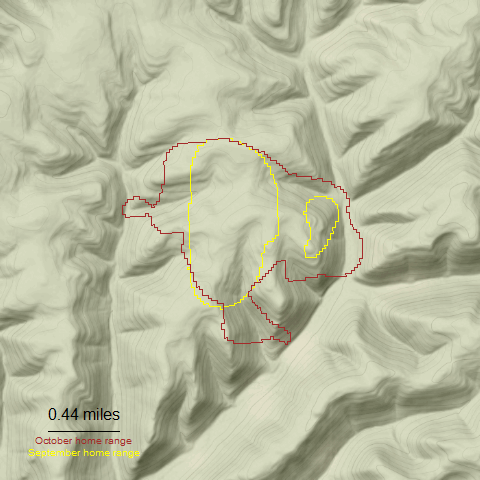So far, the buck movements we showed you for October were different from September. Deer 8159 shifted his home range away from the valley and onto the ridge. And Deer 8103 could not be patterned after mid-October.
But this buck is different. He basically did not change his pattern much at all between September and October. Look at the home range boundaries for these two months. His home range in October is hardly any larger than September.
And watch the video. We increased the frame rate in this movie so it won’t take as long to watch as the others.
Sure this deer moves around a lot more after mid-October, but if you sat on top of that ridge you would most certainly see him at some point almost any day of the month.
But don’t just look where he travels. Look where he doesn’t go!
His home range is surrounded on three sides by valleys. Notice that he never crosses the streams located at the bottom of the valley. This is no coincidence.
Most animals use physical features of the landscape to define the boundaries of their normal travels. This pattern occurs over and over again among deer. Most commonly, streams, roads, pipelines, and powerlines are all used by deer to define the boundary of their home range.
Does that mean they NEVER cross a stream or road or pipeline? Absolutely not. But often such landscape features are used by deer to define the limits of their normal travels.
For all three bucks we have featured so far, setting up in the middle of their home range would have maximized your chances of catching a glimpse of them. Not near the home range boundary.
And if streams, roads, and pipelines are usually on the edge of a deer’s home range… Maybe there are better places to find that buck!
If you would like to receive email alerts of new blog posts, subscribe here.
And Follow us on Twitter @WTDresearch
